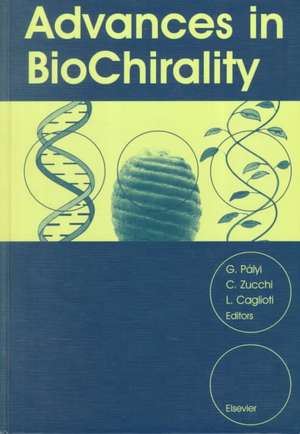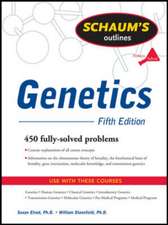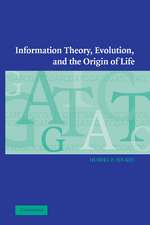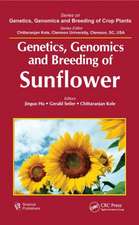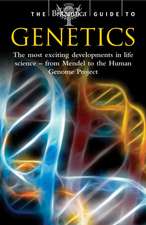Advances in BioChirality
Autor C. Zucchi, L. Caglioti, Gyula Palyien Limba Engleză Hardback – 8 sep 1999
This book covers biological homochirality from an interdisciplinary approach - contributions range from synthetic chemists, theoretical topologists and physicists, from palaeontologists and biologists to space scientists and representatives of the pharmaceutical and materials industries.
Topics covered include - theory of biochirality, origins of biochirality, autocatalysis with amplification of chirality, macroscopic (present) biochirality, fossil records of chiral organisms - paleochirality, extraterrestrial origin of chirality, exceptions to the rule of biological homochirality, D-amino acids, chemical transfer of chirality, PV effects, and polarised radiation chemistry.
Preț: 1266.18 lei
Preț vechi: 1734.50 lei
-27% Nou
Puncte Express: 1899
Preț estimativ în valută:
242.28€ • 253.64$ • 200.47£
242.28€ • 253.64$ • 200.47£
Carte tipărită la comandă
Livrare economică 05-19 aprilie
Preluare comenzi: 021 569.72.76
Specificații
ISBN-13: 9780080434049
ISBN-10: 0080434045
Pagini: 407
Ilustrații: 1
Dimensiuni: 156 x 234 x 24 mm
Greutate: 0.76 kg
Editura: ELSEVIER SCIENCE
Locul publicării:Netherlands
ISBN-10: 0080434045
Pagini: 407
Ilustrații: 1
Dimensiuni: 156 x 234 x 24 mm
Greutate: 0.76 kg
Editura: ELSEVIER SCIENCE
Locul publicării:Netherlands
Cuprins
Selected chapter headings: Preface. (C. Bartolacelli). Dimensions of Biological Homochirality (G. Pályi et al.). Theory of Biological Homochirality: Chirality, Symmetry Deficiency, and Electron-Cloud Holography in the Shape Analysis of Biomolecules (P.G. Mezey). On the Biological Advantage of Chirality (G. Gilat). Possible Mechanisms for Spontaneous Production of Enantiomeric Excess (D.Z. Lippmann, J. Dix). Search for the Origin of Homochirality of Biomolecules (L. Keszthelyi). The Role of Homochirality in Evolution (Z. Nansheng). Asymmetric Autocatalysis and Biomolecular Chirality (K. Soai, T. Shibata). Left-right Asymmetry in Animal Embryogenesis (M. Levin). Evolutionary Origin of Asymmetry in Early Metazoans (J. Dzik). Application of Amino Acid Racemization in Fossil Pleistocene Vertebrate and Invertebrate Analysis. Preservation of Proteins and Amino Acids (T. de Torres). Biomarker Reaction Kinetics during Kerogen Microscale Pyrolysis (G.D. Abbott, A.W. Scott). The Abiotic Generation of Homochirality on Saturn's Moon Titan (J.I. Lunine et al.). D-Amino Acids in Nature (Y. Nagata). Racemization-induced Defolding and Aggregation of Segments of &bgr;-Amyloid Protein: An Early Step in the Formation of Amyloid Plaques (Zs. Majer et al.) Occurrence and Biosynthesis of Animal Peptides Containing a D-amino acid (G. Kreil). Spontaneous D-Aspartic Acid Formation at Specific Sites of Lens Protein During Aging (N. Fujii et al.) Asymmetric Phenomena in Studies of Encapsulation and Assembly (J. Rebek Jr.). Self-assembly of Cholesteric Liquid Crystal Polyesters and their Stereoselective Interaction with Liposomes of DMPC (M. Pérez-Mendez et al.). Transferring Chirality in Homogeneous Catalysis (P.S. Pregosin). Chiroptical Properties of (S)-(—) Methyl Glycolate-d1 (A. Forni et al.).
Recenzii
"Every chemist working with chiral compounds and also every biologist has obviously already asked the question: "How did the molecular and macroscopic homochirality of biological systems evolve starting from a racemic prebiological world? And furthermore, how perfect is this homochirality and what are its general consequences?" This book which is based on the contributions presented at an international symposium on biological homochirality offers the first comprehensive review of these fundamental questions of biochirality. It is a real gold mine of ideas for further research to everybody interested in this very far-reaching subject including chemists, biologists, physicists, geologists and even cosmochemists." --László Markó, University of Veszprem, Hungary
